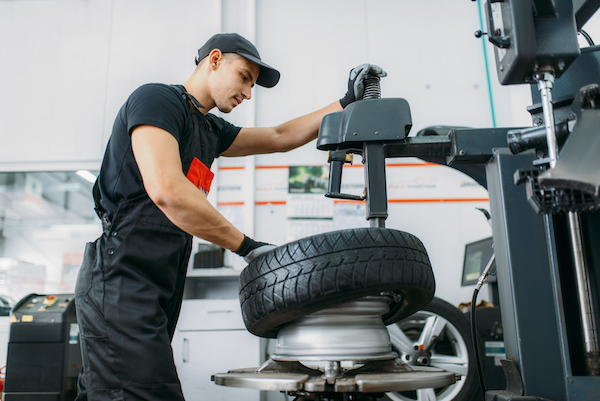Tire Solution: The Impact of Weather Conditions
When it comes to ensuring ideal efficiency and safety and security on the roadway, recognizing the influence of weather condition problems on tire solution is critical. In this discussion, we will certainly explore the complex partnership in between climate problems and tire solution, losing light on the significance of weather-specific tire upkeep practices and factors to consider.
Warmth and Tire Efficiency
When subjected to heats, tires experience modifications in performance that can substantially impact lorry safety and handling. The warmth created from extended driving or heat problems creates the tire rubber to soften, resulting in lowered step life and increased wear. As the rubber ends up being softer, the tire's grasp when traveling lessens, impacting braking ranges and total traction. In severe cases, too much warm can even cause tire blowouts, positioning a severe security risk to the car and its passengers.
Furthermore, high temperature levels can increase the procedure of tire aging, creating the rubber to deteriorate a lot more quickly. To mitigate the impacts of warmth on tire efficiency, chauffeurs ought to regularly inspect their tire stress, turn tires to make certain even wear, and check for any kind of indications of damages.
Winter Impacts
Winter conditions can have a significant influence on tire efficiency and safety. As temperatures decrease, tire rubber can harden, causing decreased grip on icy or snow-covered roadways. In cold climate, tires may likewise lose air pressure extra swiftly, which can influence managing and fuel efficiency. Additionally, cold temperature levels can trigger tire sidewalls to stiffen, boosting the risk of damage from craters or various other roadway hazards.
To mitigate the impacts of cool weather on tires, it is critical to routinely inspect tire stress and inflate them to the supplier's suggested levels. Utilizing winter months or all-season tires made for chilly weather conditions can additionally enhance grip and grasp on icy or snowy roads - mopar tire service specials. Correct tire upkeep, consisting of routine assessments for wear and damages, ends up being much more vital during colder months to make certain optimum performance and safety
Rainy Conditions Influence
During rainy problems, tire efficiency and security can be dramatically affected by the damp roadway surface areas and decreased visibility. The walk pattern of tires plays a crucial function in preserving grip on wet roads. Tires with worn-out treads are more prone to hydroplaning, where a layer of water accumulates between the tire and the roadway surface, causing loss of traction. To combat this, vehicle drivers should regularly check their tires for appropriate walk deepness and think about purchasing tires especially created for damp problems.

Snow and Tire Safety And Security
When driving in snowy problems, having the right tires can make a substantial distinction in safety and performance. Winter tires are made with unique rubber substances and step patterns to offer better grip on snow and ice contrasted to all-season tires.
In addition to making use of visit here winter months tires, it is vital to guarantee they are appropriately inflated. Cold climate can trigger tire pressure to go down, influencing grip and handling (tires morris il). Consistently checking and preserving the right tire stress is necessary for optimal performance in snowy problems

Weather-Related Tire Upkeep
Weather-related tire upkeep incorporates a variety of practices aimed at ensuring ideal tire function and long life in various weather situations. One essential element of weather-related tire maintenance is tire pressure guideline. Examining tire tread consistently and replacing tires when step wear reaches a certain depth is essential for preserving grip and stability in damaging weather condition.
Conclusion
In verdict, weather condition problems have a significant impact on tire performance and safety and security (mopar tire service specials). From warmth influencing tire pressure and use to chilly climate lowering grip, it is vital to think about the weather condition when maintaining and using tires.
In this discussion, we will check out the intricate partnership between climate problems and tire solution, losing light on the value of weather-specific tire upkeep methods and considerations.
